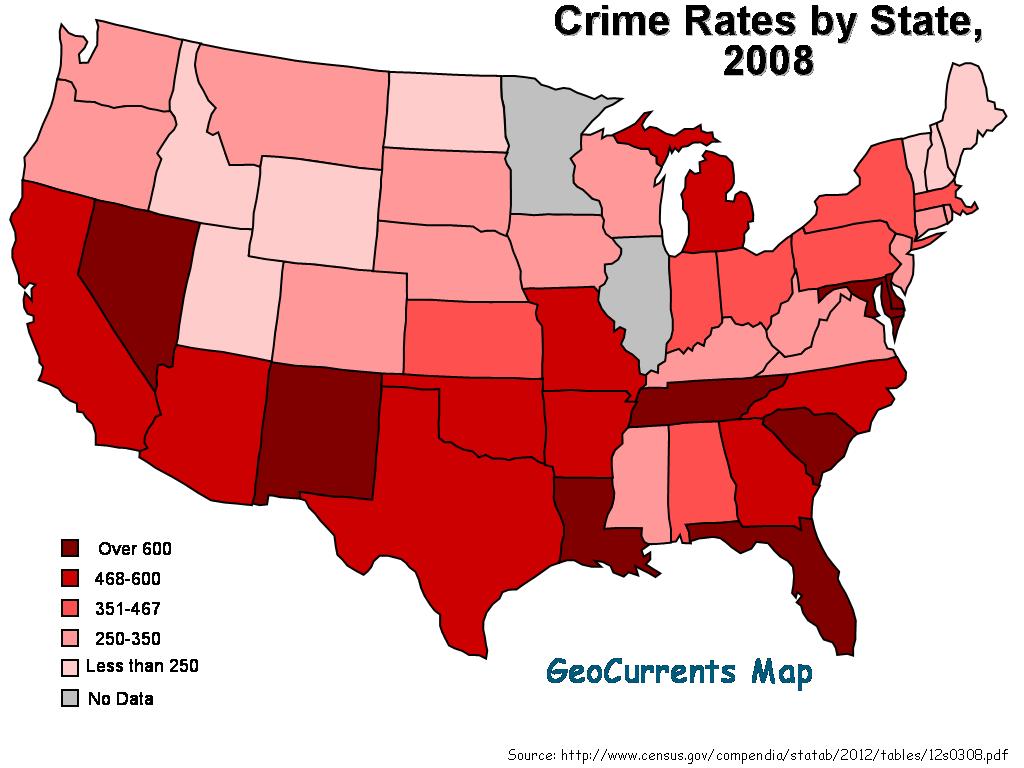The crime rate map by state serves as an invaluable resource for understanding the safety of different regions across the United States. It provides a visual representation of crime statistics, helping citizens, policymakers, and researchers grasp the varying levels of crime in different areas. In this article, we will delve into the intricacies of crime statistics, explore how to interpret these maps, and discuss their implications for communities and individuals.
As we navigate through the complexities of crime rates, it is essential to recognize that these figures can influence public perception and policy decisions. Understanding crime data allows for informed choices regarding safety, community resources, and law enforcement strategies. This article aims to equip readers with essential insights into the crime rate map by state, ensuring that they can comprehend and utilize the information effectively.
Throughout this comprehensive guide, we will cover various aspects such as the definition of crime rates, the significance of state-by-state analysis, and the potential impact of socioeconomic factors. Whether you are a concerned citizen, a researcher, or simply curious about crime trends, this article is tailored to provide you with the knowledge you need to navigate crime data confidently.
Table of Contents
- What is a Crime Rate?
- Importance of Crime Rate Map by State
- Understanding Crime Statistics
- Factors Affecting Crime Rates
- How to Read Crime Rate Maps
- Crime Rate Trends by State
- Impact of Crime on Communities
- Resources for Crime Data
What is a Crime Rate?
The term "crime rate" refers to the number of reported crimes per unit of population, often expressed per 1,000 or 100,000 individuals. This metric provides a standardized way to compare crime levels across different areas. Understanding crime rates is crucial for assessing the safety of neighborhoods and regions.
Types of Crime Rates
- Violent Crime Rate: Includes offenses such as homicide, assault, and robbery.
- Property Crime Rate: Encompasses burglary, theft, and vandalism.
Importance of Crime Rate Map by State
The crime rate map by state is an essential tool for various stakeholders, including government agencies, law enforcement, and residents. It serves multiple purposes:
- Policy Making: Assists lawmakers in crafting legislation aimed at crime reduction.
- Resource Allocation: Helps law enforcement agencies allocate resources effectively.
- Public Awareness: Informs citizens about the safety of their neighborhoods.
Understanding Crime Statistics
Crime statistics are compiled from various sources, including police reports, victim surveys, and federal databases. It is crucial to understand how these statistics are collected and reported to interpret them accurately.
Sources of Crime Data
- FBI Uniform Crime Reporting (UCR): A nationwide program that compiles official data on crime reported by law enforcement agencies.
- Bureau of Justice Statistics (BJS): Provides comprehensive data on crime, criminal offenders, and victims.
Factors Affecting Crime Rates
Crime rates are influenced by a multitude of factors that vary from state to state. Understanding these factors can help contextualize crime data:
- Socioeconomic Status: Areas with higher poverty rates often experience elevated crime levels.
- Education Levels: Higher education levels can correlate with lower crime rates.
- Population Density: Urban areas tend to have higher crime rates compared to rural regions.
How to Read Crime Rate Maps
Reading crime rate maps involves understanding the symbols, colors, and scales used to represent data. Here are some tips for interpreting these maps effectively:
- Color Coding: Different colors often represent varying levels of crime, with darker shades indicating higher rates.
- Legends: Always refer to the legend for clarification on what the colors and symbols represent.
Crime Rate Trends by State
Analyzing crime rate trends by state reveals patterns and shifts in criminal activity over time. For instance, some states may experience rising crime rates due to economic downturns, while others may see declines due to effective law enforcement strategies.
Recent Crime Rate Statistics
According to the latest FBI data:
- California has one of the highest property crime rates.
- New York has seen a significant decrease in violent crimes over the past decade.
Impact of Crime on Communities
The effects of crime extend beyond individual victims, impacting entire communities. High crime rates can lead to:
- Decreased Property Values: Homes in high-crime areas often see a decline in value.
- Increased Insurance Premiums: Higher crime rates can lead to increased costs for homeowners insurance.
Resources for Crime Data
For those interested in further exploring crime data, several reputable resources are available:
- FBI Crime Data Explorer: An interactive platform for accessing crime data.
- Bureau of Justice Statistics: Offers a wealth of information on crime statistics and trends.
Conclusion
In conclusion, understanding the crime rate map by state is essential for making informed decisions regarding safety and community resources. By utilizing this information effectively, individuals and policymakers can work towards creating safer environments. We encourage readers to engage with this data, share their thoughts in the comments, and explore additional articles on our site for more insights on crime and safety.
Final Thoughts
We hope this article has provided you with valuable information about crime rates and their implications. Stay informed, stay safe, and visit us again for more insightful content!
Also Read
Exploring The Dropout Cast: A Comprehensive GuideWordle 5/1/24: Strategies And Insights For Mastering The Game
Understanding Rainy Day Funds: Your Essential Guide To Financial Security
Mastering Wordle: A Comprehensive Guide To Winning Strategies
Exploring Marjorie Taylor Greene's Feet: A Fascinating Insight
Article Recommendations
- Folake Olowofoyeku Relationships
- Samantha Sloyan Partner
- Desmond Doss
- Candidteensnet
- Desmond Doss
- Daisy Melanin Origin
- Kyle Baugher
- Archie And Lilibet Photos 2024
- Adrianne Padalecki
- Whitney Houston Brother Michael Died




